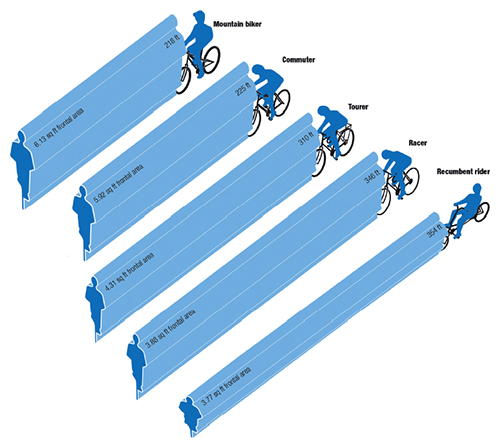The Power of Two Wheels
By David Schoonmaker
A brief review of Cycling Science: How Rider and Machine Work Together, by Max Glaskin
A brief review of Cycling Science: How Rider and Machine Work Together, by Max Glaskin

DOI: 10.1511/2013.100.69
Max Glaskin’s Cycling Science: How Rider and Machine Work Together (University of Chicago Press, $30) straddles the space between popular accounts typically found in cycling enthusiast magazines and the more academic treatments of David Gordon Wilson or Edmund Burke. It’s a fairly large gap, but Glaskin spans it ably.

From Cycling Science.
Approaching its subject from the standpoints of both rider and machine (as the subtitle promises), the book covers all the basics of human performance and how a two-wheeled conveyance converts that into the world’s most efficient transportation system. Illustrations are perhaps the book’s greatest strength: Prior to the back matter of notes, glossary and index, not a spread goes by without at least one.
The book is also an unusual mixture of the timeless and the transitory. The basic theories—aerodynamics is one of the book’s strongest—have been established over more than a century and will persist; treatments of particular technologies—for example, comparisons of different brands of cranks and power meters—are undoubtedly already marching inexorably toward obsolescence.
Click "American Scientist" to access home page
American Scientist Comments and Discussion
To discuss our articles or comment on them, please share them and tag American Scientist on social media platforms. Here are links to our profiles on Twitter, Facebook, and LinkedIn.
If we re-share your post, we will moderate comments/discussion following our comments policy.